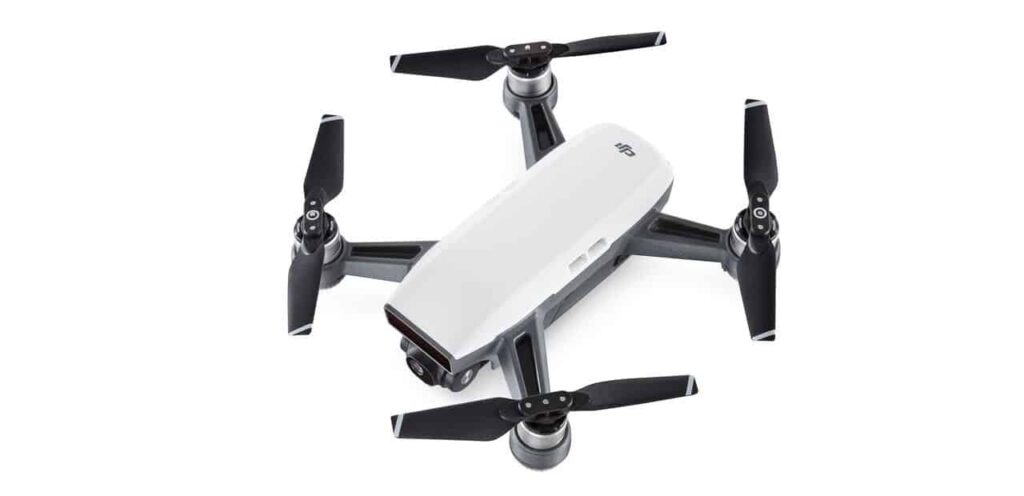DJI has announced the launch of Spark, a miniature camera drone that can lift off from the palm of a hand and capture and share images and videos.
Spark is controllable solely by hand gestures. When the drone takes off, it automatically enters Gesture Mode, which features new advanced gesture controls like PalmControl, which lets users control Spark with hand movements. In Gesture Mode, users can also send Spark up and away from them, capture an image, and recall the drone.
“Controlling a camera drone with hand movements alone is a major step towards making aerial technology an intuitive part of everyone’s daily life, from work and adventure to moments with friends and family,” said Paul Pan, Senior Product Manager at DJI. “Spark’s revolutionary new interface lets you effortlessly extend your point of view to the air, making it easier than ever to capture and share the world from new perspectives.”
Spark weighs 10.6 ounces (300 grams) and can be also operated by a remote controller or a mobile device. Spark will be available in five different colors: Alpine White, Sky Blue, Meadow Green, Lava Red, and Sunrise Yellow.
Spark’s other flight options include QuickShot Intelligent Flight Mode, which allows the drone to fly along a preset flight path while recording a short video and tracking a subject along the way. Four QuickShots are available: Rocket, sending Spark straight up into the air with the camera pointed down; Dronie, flying up and away from a subject; Circle, rotating around the subject; and Helix, spiraling away from a subject as the drone flies upward. For each QuickShot, Spark will automatically create a 10-second video from the flight that is ready to share on social media.
Previously introduced Intelligent Flight Modes such as TapFly and ActiveTrack can also be found on Spark. Developed based on DJI’s vision technology, a new TapFly sub mode called Coordinate allows Spark to fly to a location that the user taps on the mobile device screen. TapFly’s Direction Mode lets users keep flying in the direction tapped on the screen. Using ActiveTrack, Spark will automatically recognize and track an object, keeping it at the center of the frame for perfect shots of objects in motion. Spark’s 3D Sensing System will actively sense obstacles in front of the aircraft.
With the remote controller accessory, operators can switch to Sport Mode and unleash Spark’s speed potential of up to 31 mph (50 kph). Sport Mode sets the gimbal to first-person view (FPV) by default. Spark will also be compatible with DJI Goggles for an immersive FPV flight experience.
Spark houses a camera with a 1/2.3″ CMOS sensor that captures 12 megapixel photos and shoots stabilized HD 1080p videos. Spark’s 2-axis mechanical gimbal and UltraSmooth technology dramatically reduce shake and rolling shutter effect to capture cinematic shots easily.
Spark includes many previous DJI drone shooting modes with two new additions: Pano and ShallowFocus. In Pano Mode, the camera creates horizontal or vertical panoramas by automatically adjusting its gimbal and heading, taking a series of pictures and stitching them together. ShallowFocus allows the user to put part of a picture into sharp focus while the rest of the image is softened, creating photographs with a shallow depth of field. An array of filters and automatic editing templates available in the DJI GO 4 app enables creators to quickly edit videos and share them directly to Facebook, YouTube, Twitter, Instagram, and other social media platforms.
Spark’s FlightAutonomy system consists of the main camera, a downward-facing vision system, a forward-facing 3D Sensing System, dual-band GPS and GLONASS, a high-precision inertial measurement unit, and 24 powerful computing cores. These features allow Spark to hover accurately with vision system assistance at up to 98 feet (30 meters) and sense obstacles from up to 16 ft (5 m) away.
Like all recent DJI drones, Spark can return to its home point automatically with a sufficient GPS signal. While using the remote controller, if the battery gets too low, connection is lost, or the operator presses the Return to Home (RTH) button, Spark flies back to the preset home point while sensing obstacles in its path. Spark also integrates DJI’s GEO System or NFZ geofencing to provide users with up-to-date guidance on areas where flight may be limited by regulations or raise safety or security concerns.
For optimal performance, Spark is powered by a high-energy density LiPo battery and has a maximum flight time of up to 16 minutes. When flying with the remote controller accessory, Spark allows for 720p real-time video transmission from up to 1.2 miles (2 km) away.



















